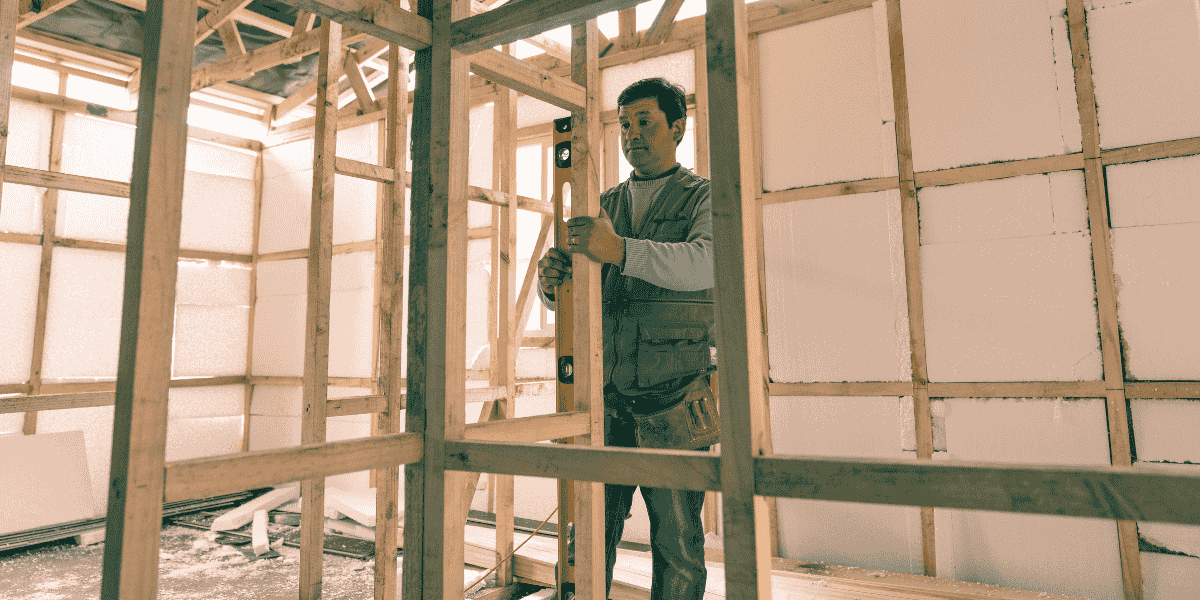How to Choose the Right Structural Repair Contractor Near You
Structural repair protects the bones of your property. Think of your home like a
human body. The foundation is the feet and legs, the beams are the spine, and the walls are the ribs. When one
of these parts weakens, everything above it feels the strain. A proper fix restores load paths, brings materials
back within safety limits, and prevents future movement.
Typical Problems a Contractor Solves
Foundation settlement, wall bowing, sagging floors
Common structural
issues include sinking foundations that require underpinning,
bowed basement walls resulting from lateral soil pressure, and floors that sag due to undersized or decayed
joists. Solutions range from helical or push piers that transfer loads to stable soil, to carbon fiber or steel
reinforcement for walls, to sistering joists or adding beams and columns.
Termite damage, rot, corrosion, seismic retrofits
In humid or coastal climates, wood rot and steel corrosion can quietly reduce
capacity. In earthquake zones, older homes may require anchor bolts, shear walls, and hold-downs. A capable
contractor understands when to repair, reinforce, or replace.
Contractor vs Structural Engineer
When you need an independent engineer first
If cracks are significant, doors are binding more frequently each month, or walls
are bowing, start by consulting a structural engineer. An engineer diagnoses the cause, provides a stamped
report, and develops a repair plan. Reputable contractors welcome this because it gives them a clear scope. It
also protects you from overselling and ensures bids are comparable.
Clear Signs You Need Structural Repair
Interior Warning Signs
Not all cracks are serious, but diagonal cracks at window or door corners, widening
gaps in trim, or sloped floors more than a quarter inch
over ten feet suggest movement. Nail pops that reappear after patching and drywall seams that keep opening are
also clues.
Exterior Warning Signs
On masonry, stair-step cracks can indicate differential settlement. A chimney
pulling away from the house is a classic red flag. Bowed basement walls or horizontal cracks at mid-height often
mean soil pressure is winning.
Why Choosing the Right Contractor Matters
Safety, Code Compliance, and Insurance
Structural work is safety-critical. Poor repairs can shift loads to the wrong
elements, creating hidden hazards. The right contractor builds to code, pulls permits, schedules inspections,
and carries proper insurance to protect you and their crew.
Cost Control and Long-Term Value
Cheap fixes that ignore root causes often lead to repeat failures. The best
contractor designs for drainage, soil conditions, and future serviceability. That saves money over the life of
your home.
Step 1: Define the Problem and Scope
Get a Diagnostic Assessment
A written report clarifies the cause, recommends the repair, and outlines any
required calculations. It becomes the standard against which proposals are measured. Ask for photos,
measurements, and design notes where applicable.
Create a Repair Brief
Write a one-page brief. Include your goals, occupancy needs, tolerance for
disruption, target timeline, and a realistic budget range. This aligns expectations and speeds up accurate
quoting.
Step 2: Build a Shortlist Near You
Local Search Methods
Start with referrals from neighbors, real estate pros, and local engineers. Use
professional associations and verified directories. Local community forums help you learn who communicates well
and who shows up on time.
Prequalification Filters
Confirm the contractor regularly handles your type of repair. Ask about typical
project sizes, emergency response, and whether they self-perform critical tasks or rely on subs.
Step 3: Verify Credentials and Compliance
Licensing and Registration
Licensing proves minimum competency and lawful operation. Ensure the license
classification encompasses structural work, not just general remodeling.
Insurance and Bonding
Request certificates of general liability and workers’ compensation sent directly
from the insurer. If your jurisdiction uses bonds, verify current status.
Permit Readiness and Code Knowledge
Ask which jurisdictions they work in most, how many permits they pulled last year,
and the typical inspection sequence for your scope. Smooth inspection history is a good sign.
Step 4: Evaluate Experience and Expertise
Methods and Materials
A top-tier contractor can explain why each method is suitable for a specific type of
soil or load. For example, helical piers suit lighter structures or limited access sites, while push piers use
the structure’s weight to reach bearing. Carbon fiber straps are ideal for restraining wall bowing, while steel
beams may be necessary for larger loads.
Project Types
Historic or heritage buildings need gentle methods and reversible details.
Commercial work emphasizes the importance of schedule discipline and documentation. Select someone whose
portfolio closely matches your property.
Step 5: Review Portfolio, Reviews, and References
Before and After Evidence
Good portfolios show problems, not just polished finishes. Look for mid-project
photos that reveal rebar, pier spacing, footing sizes, and waterproofing layers. Bonus points for measurement
data before and after.
Testimonials and Third-Party Reviews
References should confirm the quality of communication, cleanliness, fairness of
change orders, and whether the project was completed on time and within budget. Ask about issues and how they
were handled.
Step 6: Request Comparable Proposals
Scope, Materials, Method Statements
Your Request for Proposal should specify a line-item scope, product data sheets,
method statements, and a site-specific safety plan. Include requirements for debris disposal and end-of-day
cleanup.
Timeline, Milestones, and Warranty
Insist on a schedule with milestones. Request a written warranty, specify the terms
for transferring ownership, and outline the actions that could void it. Clarify any required annual
inspections.
Step 7: Compare Bids the Right Way
Apples to Apples Checklist
Create a matrix with each contractor across the top and key items down the side.
Compare pier counts and depths, beam sizes and steel grades, epoxy types and cure times, waterproofing layers,
drainage components, and any allowances. Capture exclusions and assumptions.
Total Cost of Ownership
Consider the long term. A system that allows future adjustments or additional
anchors might be worth a small premium. Drainage improvements reduce future risk and often pay for
themselves.
Step 8: Interview Your Shortlist
Smart Questions to Ask
Who will be the working foreman on your site, and how many years have they held that
role? How are change orders priced and approved? What is the plan if hidden conditions appear?
Communication and Reporting
Request weekly progress updates, including photos and a brief written log. Agree on
inspection hold points and sign-offs. Decide who must be present at key milestones.
Step 9: Contracts and Payment Terms
What a Solid Contract Includes
A clear contract outlines the scope, plans, specifications, permit requirements,
schedule, payment milestones, and closeout documents. Tie payments to progress. Require lien waivers from the
contractor and subs with each draw. Include a simple dispute resolution pathway.
Red Flags
If a contractor refuses to put details in writing or demands a large deposit without
materials on order, walk away. Another warning sign is refusal to name the supervising foreman.
Step 10: Price Drivers You Should Understand
Soil, Access, Utilities, Water
Poor soils often require deeper or more numerous piers. Limited access can
necessitate hand digging or the use of compact equipment. Underground utilities complicate excavation. Active
water ingress means pumps, drainage, and waterproofing.
Hidden Conditions and Contingencies
Ask contractors to specify contingencies for rock, unexpected voids, or deeper
bearing strata. A transparent contingency is better than lowball bids followed by costly change orders.
Aftercare, Maintenance, and Monitoring
Warranty Compliance
Most structural warranties require you to manage water. Extend downspouts, maintain
gutters, and keep grading sloped away from the foundation. Avoid deep-rooted plants near the foundation.
Annual Checks and Documentation
Keep a simple log with photos of any cracks or door changes each season. If a crack
widens measurably or doors stick again, contact the contractor. Many will recheck within the warranty period at
no additional cost.
Common Red Flags and How to Avoid Them
Unrealistic Discounts or Timelines
If the schedule sounds impossible or the price seems too good to be true for complex
work, it usually is. Trust consistency and clarity over hype.
No Engineering Basis for Fixes
Beware of one-size-fits-all solutions. Demand that the repair method be tied back to
the loads, soil, and the specific failure mode in your home.
DIY vs Professional Repairs
What You Can Do
Homeowners can manage water and monitor cracks. Seal minor non-structural gaps, keep
water away from the foundation, and document changes.
What You Should Not Do
Do not replace beams, cut bearing walls, or jack floors without a plan and
supervision. Loads can shift unexpectedly, resulting in injuries or additional damage.
Permits, Inspections, and Compliance
Who Pulls the Permit
Your contractor should manage permits unless local rules require the owner to apply.
Either way, you must be listed correctly and receive copies of the license and final signoff.
Required Inspections and Signoffs
Inspections may include footing checks, reinforcement placement, waterproofing, and
final structural signoff. Plan for these milestones in the schedule.
Final Thoughts
Choosing the right structural repair contractor near you
is not a matter of guesswork. It is a methodical process that begins with a proper diagnosis, filters candidates
based on credentials and capability, and concludes with a clear contract and an accountable schedule. Focus on
cause rather than cosmetics, documentation rather than promises, and lifetime value rather than lowest bid. When
you do this, you get a safer home, fewer surprises, and a repair that stands the test of time.
FAQs
1. Should I hire a structural engineer before contacting contractors
If you see major cracks, bowing, or uneven floors, yes. An engineer’s report gives
you a clear scope and prevents apples-to-oranges proposals.
2. What is a fair deposit for structural repairs
Deposits vary by region and material lead times. Many projects require a 10- to
20-percent deposit, followed by progress payments tied to milestones and lien waivers.
3. How long do foundation repairs usually take
Small pier installations can finish in a few days. Complex underpinning, wall
rebuilds, or drainage upgrades may take several weeks, depending on access and the results of
inspections.
4. Are carbon fiber straps as strong as steel beams
They serve different purposes. Carbon fiber resists tension and is ideal for
restrained bowing, where anchors or braces provide support. Steel is preferred when large amounts of compression
or bending capacity are needed.
5. What voids a structural repair warranty
Poor drainage, altered grading, landscaping that traps water, or unauthorized
modifications can void coverage. Follow the maintenance plan and keep records.












